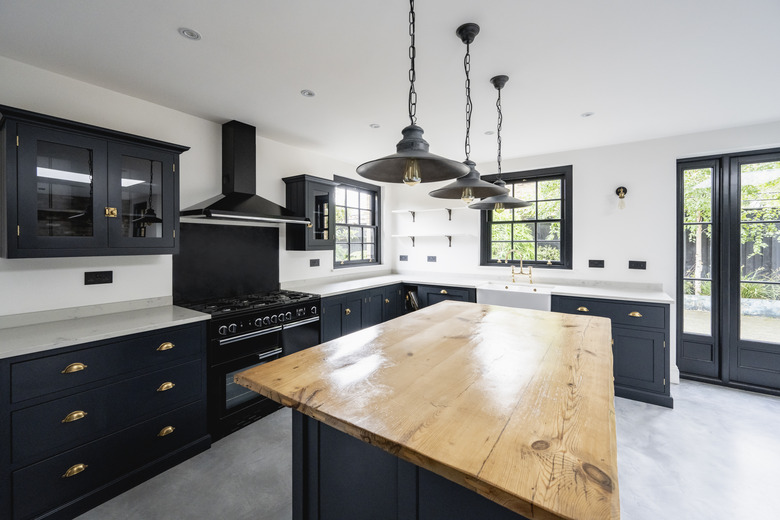How To Wire A Light Fixture With Green And Yellow Wire
We may receive a commission on purchases made from links.
If you have a light fixture that only has one wire, you're in trouble whether it's a yellow wire with a green stripe or any other color. A light fixture needs at least two wires to function, and most have a third to connect the fixture to ground. The most likely scenario is that your fixture has three wires, and one of them is green and yellow, in which case, the green and yellow wire is the ground wire.
Most light fixtures sold in the United States have either a green ground wire or a bare one, but green and yellow ground wires do exist. The hot wire is usually black or red by convention, but the National Electric Code (NEC) hasn't established a rule about the color of the hot wire or the ground wire. There is an NEC rule governing the color of the neutral wire, however. It's always white.
Antique and Foreign-Bought Fixtures
Antique and Foreign-Bought Fixtures
If your light fixture has a black wire, a white wire, and a green and yellow wire, there's no ambiguity, and you can go ahead and hook up the fixture in the same way you would any other, treating the green and yellow wire as ground. Your fixture may come from elsewhere, however, and if so, the colors of all three wires may not follow North American standards.
Fixtures that come from Europe, for example, follow a different color code. Neutral is blue, hot is brown or black, and ground is green and yellow. In older U.K. fixtures — just to add to the confusion — the neutral wire is black, and the hot wire is red.
Antique fixtures may also conform to different wire color standards, although many of these don't have ground wires, so they probably don't have green and yellow ones either. If you happen to have an antique light fixture with black, white, and yellow wires, you can be pretty sure the yellow wire is ground because the black-for-hot and white-for-neutral convention has been around for a fairly long time.
How to Check the Wires
How to Check the Wires
If you aren't sure which wire on the fixture is hot and which one is neutral, you can conduct a simple test:
-
Turn off the breaker and
temporarilyhook up the wires to the circuit wires using wire caps to secure them. Remove the bulb from the fixture.
-
Turn the breaker back on and touch the lead of a voltage tester to the top inside of the light socket (not the nub at the bottom of the socket) while you touch the other lead to the circuit ground wire.
-
Check the tester. If it indicates positive voltage, the wires are reversed.
-
Turn off the breaker, change the wires, and conduct the test again. You've done it right when the reading between the top of the socket and the ground wire is zero.
You can also conduct this test by touching one lead to the nub at the bottom of the socket and the other lead to ground. In this case, the wiring is correct if you get a positive voltage reading.
How to Wire the Light Fixture
How to Wire the Light Fixture
Now that you've established which wire is hot, which is neutral, and which is ground, you're ready to install the fixture. There should be no ambiguity about the colors of the circuit wires in the house — neutral is white, hot is black, and ground is either green or bare.
Do the wiring with the circuit breaker off for safety. Twist the fixture hot wire to the black circuit wire and screw on a wire cap. Repeat for the neutral wire, twisting it to the white circuit wire and capping it. Finally, twist the last wire — whether it's a green wire, a green and yellow wire, a yellow wire with a green stripe, or a bare one — to the ground wire. If you're mounting the fixture on a metal electrical box and the box is properly grounded, you can twist the fixture ground wire to the ground screw on the box.
